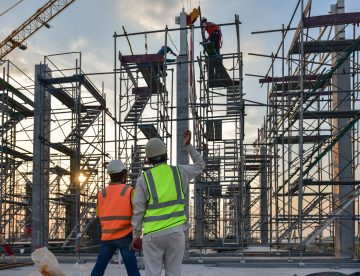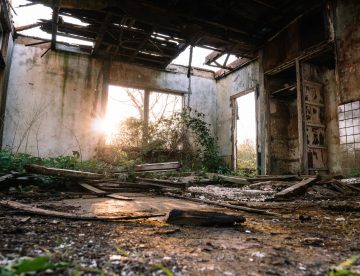
While holidaymakers in the UK may be enjoying the recent heatwave, construction workers and others who mostly work outside may be finding the weather slightly more uncomfortable.
With temperatures heading above into the mid-30°Cs, some forecasters are warning that by Sunday, we could exceed the UKs record for the hottest day (which was 38.7°C in July 2019). Added to the fact that the heatwave is expected to continue for at least another eight days, the Met Office have issued an Amber weather warning for extreme heat, meaning that it could result in travel disruption, serious illness and even danger to life.
To help everyone stay safe and well, we’re focusing today’s blog on the health impacts of hot weather and what you can do to avoid them.

Over a quarter of a million extra construction workers may be needed by 2026, according to the latest Construction Skills Network report. That’s over 53,000 new recruits per year for the next five years!
Published annually by the Construction Industry Training Board (CITB), the report looks into the UK’s construction economy and makes key predictions about what will happen in terms of labour/ skills needs over the coming years.
Check out this week’s blog for more details of what this year’s report had to say plus what it means for the sector and our region.

(Mental Health Awareness Week 2022)
After two years of the pandemic, where there has been much less direct contact with friends, family, colleagues or even with essential healthcare professionals, many people are feeling a greater sense of loneliness, isolation and disconnection from our altered society.
Responding to this, the Mental Health Foundation have chosen ‘loneliness’ as the theme of this year’s Mental Health Awareness Week which starts today. With construction workers being exposed to many of the same stress points in life as everyone else, we’re using this week’s blog to talk about loneliness in detail and provide a few tips as to what can be done to manage or overcome this problem.

With the news headlines moving slightly away from the coronavirus pandemic into an almost daily dose of woe about the energy market crisis, in today’s blog we’re looking at what effect this might have on construction.
While Sheriff Construction and other building contractors like us do not use very much natural gas in our day-to-day work, the problem is that our suppliers do. Manufacturing the materials we use is often energy intensive and, with the hike in the price of gas, it’s inevitable that those costs will start to pass through the procurement process. One leading economist is warning the industry to be prepared for a ‘phase of rising prices’ in bricks, cement and concrete. Read on for more information.

While the generally drier weather of summer makes it one of the best times for completing construction works, every year the season also brings some additional challenges, for instance around maintaining the quality of products, the reduced availability of workers and specific heat-related safety risks. Of course, this year there are additional woes related to the pandemic and Brexit but in this week’s blog, we’re focusing on four areas of concern that sites face during a typical summer and included some guidance about what you can do to avoid or overcome those challenges.

According to CPRE The Countryside Charity, the UK has over 25,000 hectares of brownfield land across 21,000 sites. Many are run-down plots of land that represent all kinds of safety hazards and, when stuck in such poor condition for several years, they become a real blot on the landscape. So what should all this land be used for? A survey carried out by Romal Capital found that 59% of the British public would opt for either the building of modern, efficient homes and communities to help solve the ongoing housing crisis or cultural landmarks. Read more about both the survey and the work we’re doing to prioritise brownfield development in this week’s blog.

Despite expectations that house prices would fall due to the coronavirus pandemic, the virus seems to have been no match for the UK’s buoyant property market which, over the last year as seen house prices hit some record highs. That might seem good news for sellers but, with many modern buyers seeking a touch of luxury, anyone trying to sell an older property may want to look for ways in which they can make it stand out and enhance the value of the sale. In this week’s blog, we’re sharing some tips for making your property appeal to potential buyers. On top of that, we’ve also got a treat for first-time buyers with the launch of our brand new development of apartments, bungalows and houses at Kingham Way, Luton – on sale right now!

A few weeks ago, we reported on some aspects of the UK budget which are likely to have an impact on construction. One thing we didn’t spot was Chancellor Rishi Sunak’s announcement of a new Taxpayer Protection Taskforce which is set to investigate those who make fraudulent claims through government COVID support schemes such as furlough and the Self Employment Income Support Scheme (SEISS). In this week’s blog, we’re taking a closer look at what this taskforce is set to do and explore whether there is a problem in construction with some workers choosing grants over tools.


